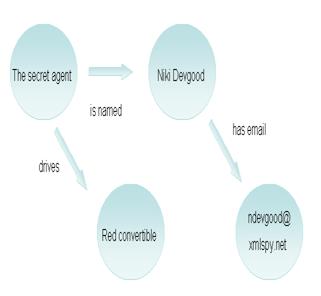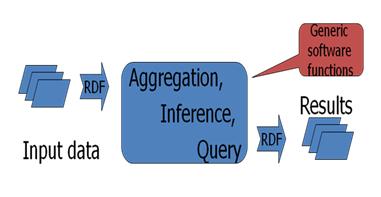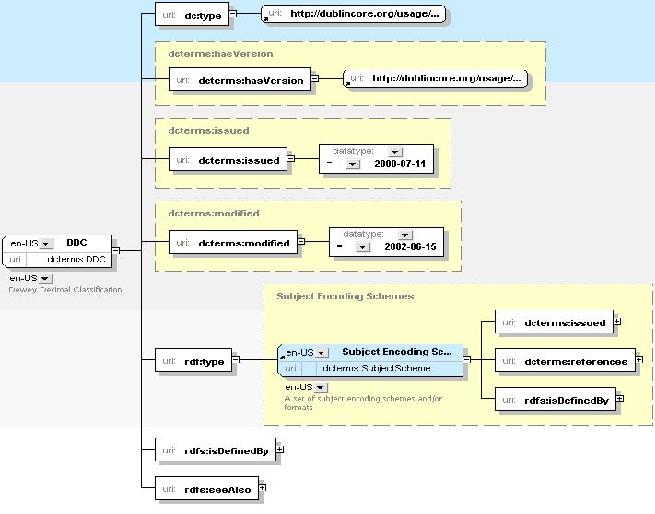Technical Paper Title: SEMANTIC WEB TECHNOLOGIES
Authors: SARANYA.M & K.V.N.RAMYA, 3rd BTech, CSE
College: Prakasam Engineering College, Kandukur
Introduction:
The Semantic Web initiative of the World-Wide Web Consortium (W3C) has been active for the last few years and has attracted interest and scepticism in equal measure. The initiative was inspired by the vision of its founder, Tim Berners-Lee, of a more flexible, integrated, automatic and self-adapting Web,providing a richer and more interactive experience for users.
This article discusses the current state of the Semantic Web, and how it may impact on the UK Higher and Further Education sectors over the next few years. It introduces Tim Berners-Lee’s initial vision for the Semantic Web, briefly discussing the technology and tools now available to support it, taking a look at the ‘layer-cake’ diagram of the Semantic Web architecture. The impact of the Semantic Web is likely to be particularly strong in distance learning, libraries and information management, and collaborative research; we shall take a look at each. The UK is particularly strong in these areas, and we present a roundup of the research and development, with an emphasis on the leading UK research teams.
What Is Semantic Web Technology ?
“The Semantic Web: a new form of Web content that is meaningful to computers will unleash a revolution of new possibilities”.
Calling it the next step in Web evolution, Berners-Lee defines the Semantic Web as “a web of data that can be processed directly and indirectly by machines.”
Vision Of Semantic Web Technologies:
The vision of the Semantic Web is a “web of data” that not only harnesses the seemingly endless amount of data on the World Wide Web, but also connects that information with data in relational databases and other non-interoperable information repositories, for example, EDI systems.
Problems in current web system:
• Goal-driven access to information is problematic
• Task-oriented integration of information sources is problematic
• The Semantic Web
Semantic Web Technologies
Proposed benefits :
• Re-use information designs
• Use open building blocks to process common information
• Integrate data sources: new uses for existing data
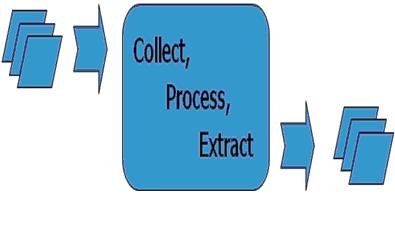
Application Areas for Semantic Web Technology
. Content-Oriented Retrieval
. Reference Modeling & Model-Driven Development
. Information & Process Integration
. Flexible Business Transactions
Examples of Semantic Web Technologies
The next step towards the Semantic Web requires that data from multiple domains is classified based on its properties and its relationship with other data. This is where Semantic Web technologies such as RDF, RDFS, and OWL come in.
Resource Description Framework (RD)
An official W3C recommendation, RDF is an XML-based standard for describing resources that exist on the Web, intranets, and extranets. RDF builds on existing XML and URI (Uniform Resource Identifier) technologies, using a URI to identify every resource, and using URIs to make statements about resources. RDF statements describe a resource (identified by a URI), the resource’s properties, and the values of those properties. RDF statements are often referred to as “triples” that consist of a subject, predicate, and object, which correspond to a resource (subject) a property (predicate), and a property value (object). Below is an example of an RDF statement in plain English:
[resource] [property] [value]
The secret agent is Niki Devgood
[subject] [predicate] [object]
RDF triples can be written with XML tags, and they are often conceptualized graphically as shown below:
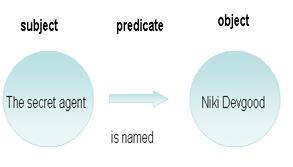
After creating this triple, we can go on to create other triples to associate the agent with an email address, image, etc.
Once triples are defined graphically, they can be coded in either RDF/XML or n-Triples formats to be accessed programmatically.
By creating triples with subjects, predicates, and objects, RDF allows machines to make logical assertions based on the associations between subjects and objects. And since RDF uses URIs to identify resources, each resource is tied to a unique definition available on the Web. However, while RDF provides a model and syntax (the rules that specify the elements of a sentence) for describing resources, it does not specify the semantics (the meaning) of the resources. To truly define semantics, we need RDFS and OWL.
What can be Achieved ?
• Integration of diverse data sources
• Focus on information needs
• Generate new knowledge
RDF Schema (RDFS)
RDFS is used to create vocabularies that describe groups of related RDF resources and the relationships between those resources. An RDFS vocabulary defines the allowable properties that can be assigned to RDF resources within a given domain. RDFS also allows you to create classes of resources that share common properties.
Using the same triples paradigm defined by RDF, RDFS triples consist of classes, class properties, and values that define the classes and relationships between the resources within a particular domain.
In an RDFS vocabulary, resources are defined as instances of classes. A class is a resource too, and any class can be a subclass of another. This hierarchical semantic information is what allows machines to determine the meanings of resources based on their properties and classes.
Below is a graphical example of an RDFS that shows a resource and its associated properties, values, and classes.
Overall, RDFS is a simple vocabulary language for expressing the relationships between resources. Building upon RFDS is OWL, which is a much richer, more expressive vocabulary for defining Semantic Web ontologies.
OWL is a third W3C specification for creating Semantic Web applications. Building upon RDF and RDFS, OWL defines
Web Ontology Language (OWL)
The types of relationships that can be expressed in RDF using an XML vocabulary to indicate the hierarchies and relationships between different resources. In fact, this is the very definition of “ontology” in the context of the Semantic Web: a schema that formally defines the hierarchies and relationships between different resources. Semantic Web ontologies consist of a taxonomy and a set of inference rules from which machines can make logical conclusions.
A taxonomy in this context is system of classification, such as the scientific kingdom/phylum/class/order/etc. system for classifying plants and animals that groups resources into classes and sub-classes based on their relationships and shared properties.
Since taxonomies (systems of classification) express the hierarchical relationships that exist between resources, we can use OWL to assign properties to classes of resources and allow their subclasses to inherit the same properties. OWL also utilizes the XML Schema datatypes and supports class axioms such as subClassOf, disjointWith, etc., and class descriptions such as unionOf, intersectionOf, etc. Many other advanced concepts are included in OWL, making it the richest standard ontology description language available today.
A graphical example of an OWL ontology is below.
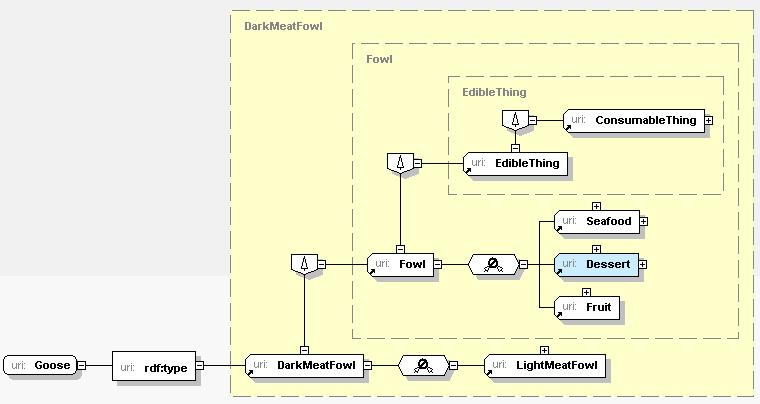
All the detailed relationship information defined in an OWL ontology allows applications to make logical deductions. For instance, given the ontology above, a Semantic Web agent could infer that since “Goose” is a type of “DarkMeatFowl,” and “DarkMeatFowl” is a subset of the class “Fowl,” which is a subset of the class “EdibleThing,” then “Goose” is an “EdibleThing.”
It’s important to note that OWL has three sub languages, each with increasing complexity: OWL Lite, OWL DL, and OWL Full. OWL DL includes OWL Lite, and OWL Full includes OWL DL and OWL Lite. Developers choose which OWL dialect to use based on the level of complexity and level of detail required by their semantic model.
When RDF resource descriptions are associated with an ontology defined somewhere on the Web, intranet, or extranet, it’s possible for machines to retrieve the semantic information associated with each resource. It’s in this way that URIs, XML, RDF, RDFS, and OWL combine to make the Semantic Web a reality, making scenarios such as the software consultant’s SOAP research and business trip planning described earlier feasible.
Other Semantic Web Technologies
In addition to the technologies mentioned here, provisions are also in place for Semantic Agent “proofs,” which allow humans to retrace the steps a Semantic Web agent took to arrive at a particular conclusion, as well as for security and trust mechanisms provided through digital signatures.
Also, as mentioned earlier, Semantic Web agents, which are computer programs capable of interpreting RDF and OWL semantic information, are also required for harnessing the power of the Semantic Web.
For more information about the Semantic Web and its associated technologies, visit the links at the end of this page.
Visual Semantic Web Development
Given that RDF, RDFS, and OWL Semantic Web documents are often represented graphically, it makes sense to develop the corresponding RDF/XML or n-Triples code in a highly-visual manner. Following in its tradition of supplying developers with easy-to-use, visual development tools, Altova created SemanticWorks™ 2006 to help our customers learn and work with these new Semantic Web technologies in an intuitive way.
A visual RDF and OWL editor, SemanticWorks includes the following powerful functionality:
• Support for visual creation and editing of RDF, RDF Schema (RDFS), OWL Lite, OWL DL, and OWL Full documents
• Intelligent entry helpers that offer context-sensitive editing choices
• Syntax checking for RDF, RDFS, and OWL documents
• Semantics checking for OWL Lite and OWL DL ontologies
• Auto-generation and editing of RDF/XML or N-triples formats based on visual RDF/OWL design
Altova SemanticWorks® 2008 allows you to graphically create and edit RDF instance documents, RDFS vocabularies, and OWL ontologies with full syntax checking and ontology semantics checking. Context-sensitive entry helpers present you with a list of permitted choices based on the RDF or OWL dialect you’re using, so you can create valid documents quickly and easily.
You can switch from the graphical RDF/OWL view to the text view to see how your document is being built in RDF/XML or N-triples format, and you can export your file from RDF/XML to N-triples or vice versa at any time. And, because the RDF/XML or N-triples code is auto-generated based on your design, you can learn and experiment with the concepts of the Semantic Web without having to write complicated code.
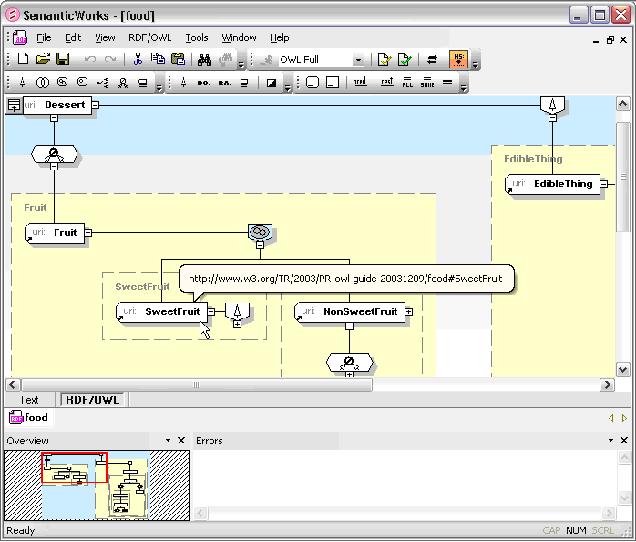
Semantic Web Present and Future
It’s important to note that implementation of RDF, OWL, and the Semantic Web as a whole will be a gradual process. Questions about what the Semantic Web is and how it can benefit businesses and individuals are similar to initial confusion about why we needed HTTP and the Web before “WWW” was a staple of our daily vocabulary. But considering how those technologies have proliferated, it’s likely that the Semantic Web vision is one that will be realized, even if it’s on a small scale initially.
It’s also important to note that, similar to current Web services implementations, the Semantic Web may initially be restricted to intranet and extranet applications until questions about information security can be sufficiently addressed. .
The true impact of the Semantic Web will not be known for quite some time, but its potential is staggering. Some Semantic Web proponents have asserted that it will lead to the evolution of human knowledge itself by allowing people – for the first time – to quickly filter and synergize the massive amounts of data that exist in the world in a relevant, productive way.
Where are we now?
• Semantic Web is new technology
– about 10 years after the original WWW
Many applications are experimental
• The goals may be inevitable…
– Applications working together with users’ information, not owning it
– drawing background knowledge from the Web
– less dependence on hand-coded bespoke software
• … but the particular technology is not
Conclusion:
Semantic Web Technology Today
• World Wide Web incremental advance
• Evolvable approach to information
• Leverages open software building blocks
• Builds on diversity
– creating new knowledge
– enabling new applications
• Low-risk adoption strategy by incremental,

